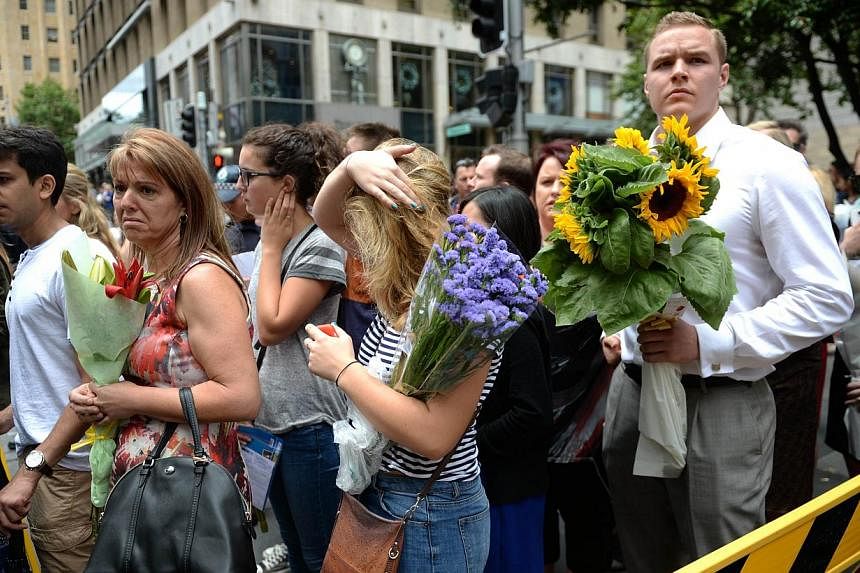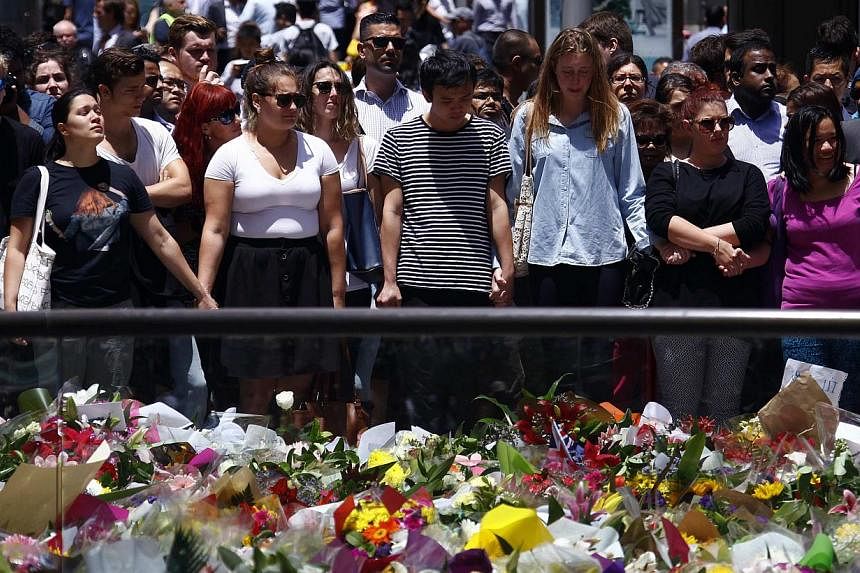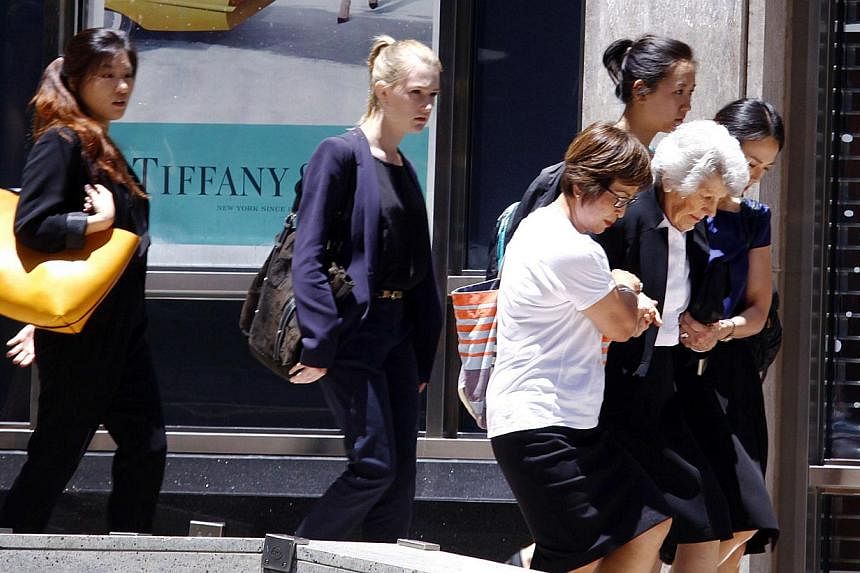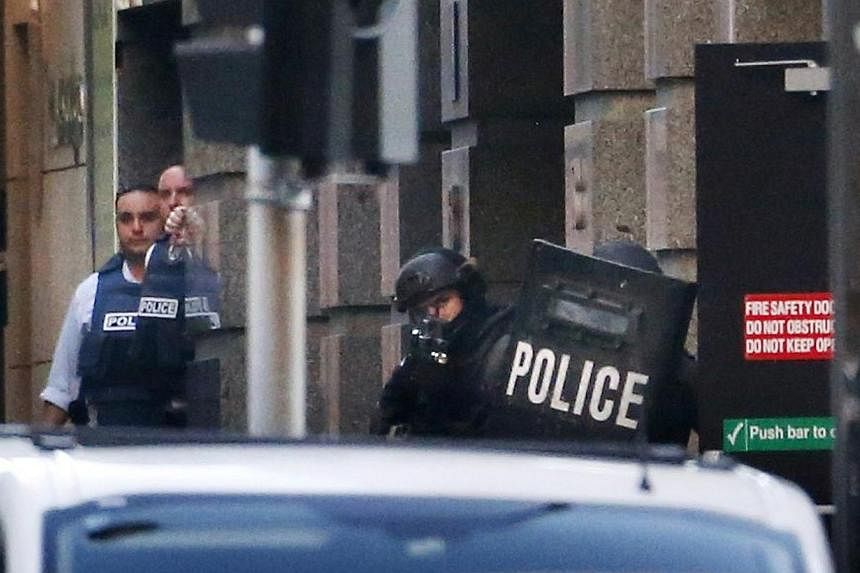 SYDNEY - It was at the intersection of Elizabeth and King streets that I saw the first signs of the drawn-out tragedy that would leave a city and a nation shocked.
SYDNEY - It was at the intersection of Elizabeth and King streets that I saw the first signs of the drawn-out tragedy that would leave a city and a nation shocked.
The heart of Sydney - its street names reflecting the colonial era - its banks, courts, churches, hospitals, stores and hotels crowding together to form Australia's biggest city - is now suddenly experiencing the reality of 21st century terrorism.
It was around 10:30am on a Monday morning. Underneath Christmas decorations hanging on every street-light pole and in every shop window, tourists wandered from a giant liner anchored at Circular Quay just a few blocks away, while lawyers in their robes held street-corner conversations with colleagues and clients near state and federal courts in the vicinity. And workers picked up a morning coffee to take back to surrounding office towers.
But one could immediately sense something was amiss
Police cars began blocking intersection after intersection. That they'd been urgently called from other duties was clear, as some vehicles still displayed roof signs warning of "random breath-testing". Officers politely directed pedestrians like me to take a detour.
I was on my way to browse the big stores in the city centre for some Christmas shopping when I was told not to enter an area cordoned off by the police.
One in a suit and tie was plainly a detective, suddenly called to assist his uniformed colleagues with crowd control.
"Something very bad has happened," he said as he waved me and other Christmas shoppers away from the CBD's heart: the long pedestrianised mall of Martin Place which leads from the New South Wales state parliament to the city's central war memorial, the Cenotaph.
As I moved on to the shopping precints nearby, I found strangers stopping in their paths to talk to each other and share guesses about what might be happening.
Sydney is a big city. It is used to robberies, road crashes, industrial accidents, even bomb threats.
But this was to be different.
In September, the federal government raised the country's terror alert level to the second highest level, acknowledging that its participation in conflicts in the Middle East also brought a risk back home.
On Monday morning, the risk was manifested in a 16-hour siege at the Lindt chocolate cafe and the loss of three lives, including that of the hostage-taker. I have walked past the cafe several times, but never went in.
I tried to recall the interior of the cafe as news emerged on radio, television and social media that the café in Martin Place, opposite the Channel 7 TV studios and the Reserve Bank headquarters, had been seized by a gunman.
The greatest shock for many Australians was perhaps that a few of the café hostages were made to hold up a black and white flag carrying an Arabic script which was initially thought to be the flag of terror group ISIS (Islamic State in Iraq and Syria). The wording was later confirmed to be a widely-used text or statement of faith.
Few, if any, would ever have imagined such a terror act happening right at their doorsteps.
Throughout the morning, the police cordon widened. More streets were closed, more sirens were heard as emergency vehicles drove through: lines of ambulances, police vans marked "rescue" or "control" took up positions, officers in heavy protective gear conferred in empty streets and behind police barriers.
TV satellite trucks lined up in the fast emptying streets and reporters clustered on what vantage points there were to tell a nationwide - and worldwide - audience that Sydney's heart was now isolated and tense.
Police escorted lines of people out of the exclusion zone as buildings were evacuated. Workers who quietly left the morning's business suspended, a doctor still in operating greens, lawyers in courtroom wigs and gowns.
I stood at the top of Martin Place, on a low wall outside the old, sandstone Sydney Eye Hospital. It was eerily quiet. Hundreds of people gathered like me around the edges of the exclusion zone and we exchanged information and impressions in low voices.
Typical of Sydney's diverse mix, we were of every race and ethnicity - accents revealing many homelands - but now drawn together by this mutual concern for the peace of their adopted country. At one corner, a man who was handing out the Big Issue magazine that funds assistance for the jobless, became a source of exchanged information for the many passers-by who paused to chat.
It was so quiet you could hear police plastic tape flapping in the breeze. Sure, most people held mobile phones up and took a picture of what little they could see. Some took selfies, apparently enraging others in the Twittersphere. But most were sombre, chatting to strangers about several other, inaccurate reports of bomb-scares and gunmen.
And so it lasted, for hours. Like many, I had to leave to continue my day's commitments. Eventually, on a train pulling across the harbour bridge to the leafy suburbs beyond, conversations amongst fellow passengers were all about this still-unfolding tragedy in the heart of our city. Later we watched, when we could as TV channels continued their coverage into the early hours of Tuesday and the siege came to its violent, tragic end.
Today there is only one topic of conversation in the suburbs or the city. One misguided man's actions masquerading as political action has cast a pall across this multicultural city's approach to summer holidays and the festive season.
Of the hundreds who laid flowers at an impromptu memorial close to the scene of the siege, there were the elderly and children, construction workers and fashionistas - and there were women in Muslim headscarves.
The debate about Australia's overseas military commitments continues but, if anything, the unity of its people in grief over the events in Martin Place has drawn people together. The #illridewithyou campaign is an example of how Australians have taken to social media in solidarity with the country's minority groups.
On the day terror struck at the heart of Sydney, Australia and her diverse population has shown the world the way to respond to the challenges of terrorism.








